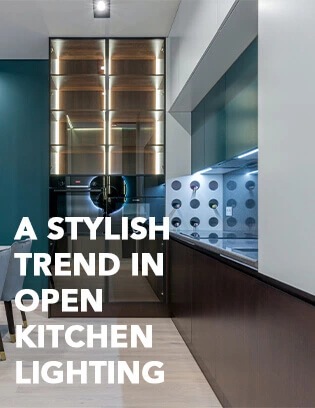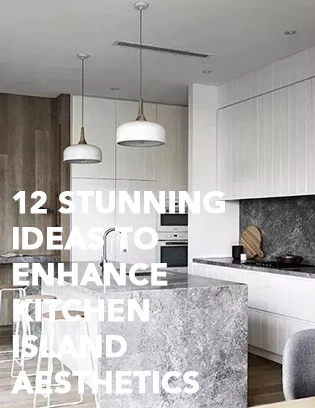How to Design Your Custom Wardrobe for Maximum Efficiency
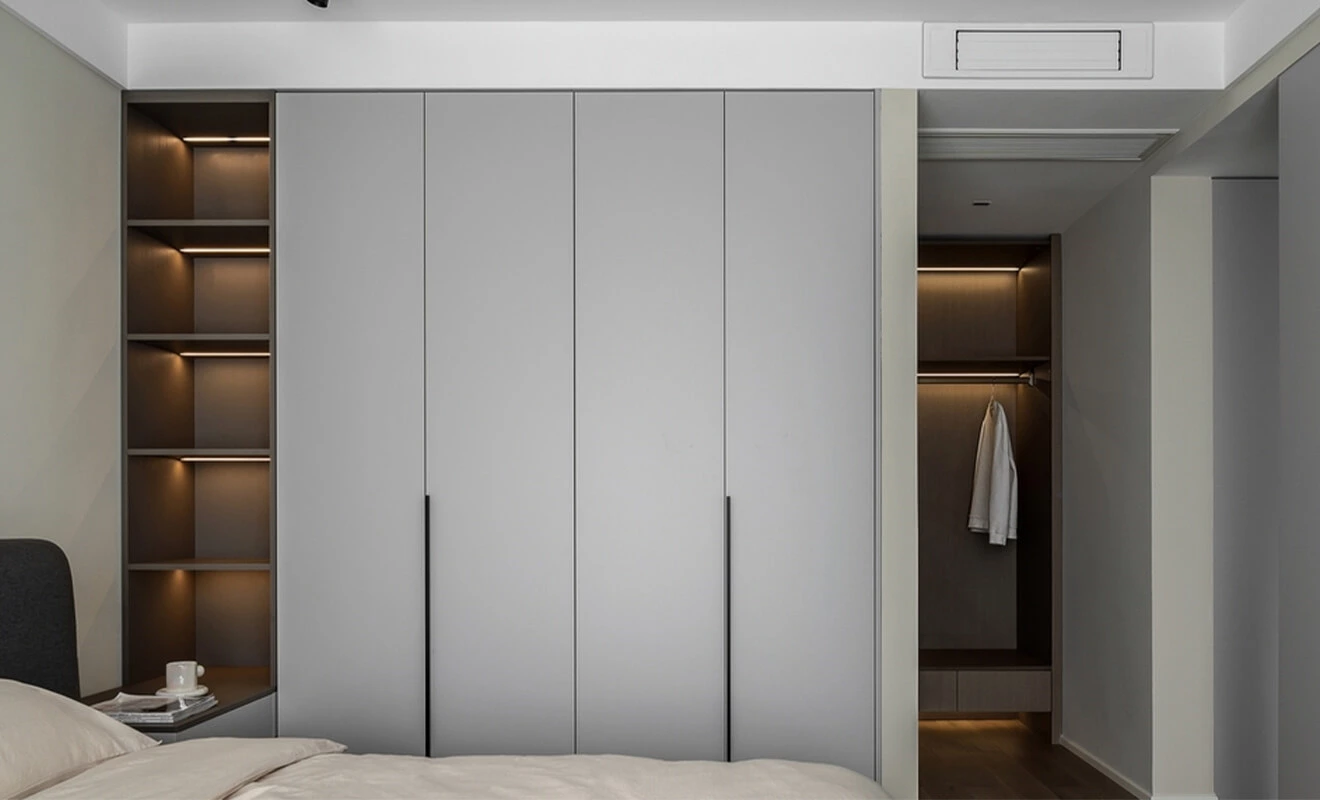
What is the most important part of bedroom decoration? Most people would say it's the bed. However, according to a study on human behavior published in the British Medical Journal, the average person spends about 25 years of their life in the bedroom. And the most frequently used item in the bedroom is actually the wardrobe, accounting for over 50% of the time spent there. If you want to live more comfortably, it's essential to learn how to design your wardrobe! This article will introduce how to design the most practical wardrobe.
Wardrobe Layout
First, let's divide the wardrobe layout into different areas. It's not about making the design more complex, but rather about learning how to make the best use of space. The wardrobe can be divided into five areas: hanging area, folding area, drawer area, bedding/seasonal clothing area, and appropriate empty space.

Hanging Area: Hanging clothes is the best way to store them. The hanging area shouldn't be filled to the brim; it needs to have some empty space. When taking out thin garments, a gap of about 2.5cm between them is suitable, while for thicker garments, a gap of around 5cm is more appropriate. Depending on the length of the clothing, you can further divide it into areas for long clothes, short clothes, and trousers.
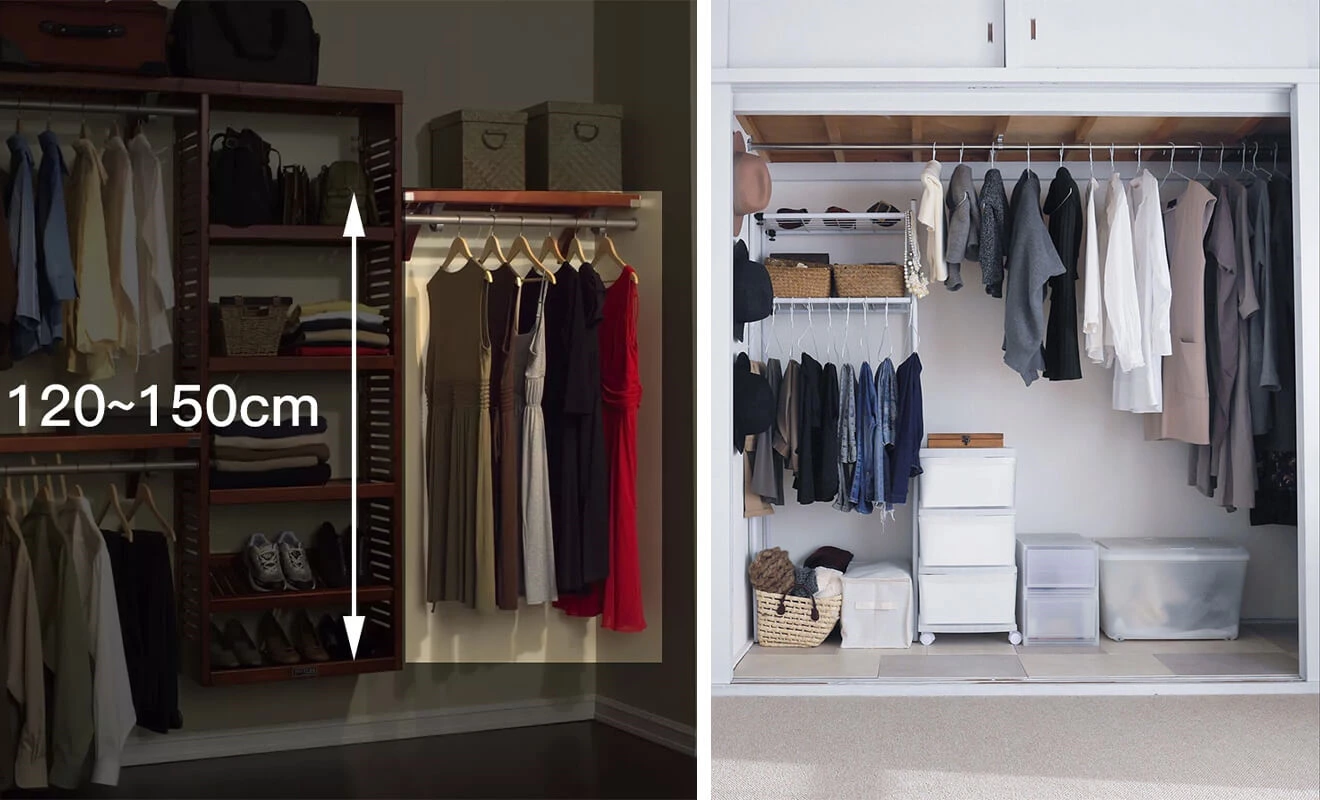
Long Clothes Area: This area is designed to store long garments such as coats, trench coats, down jackets, and dresses. The height can be set between 120cm and 150cm, with the hanging rod's height adjusted for easy reach. A depth of 40cm is sufficient. If you're unsure whether you'll buy extra-long clothes, it's recommended not to include partitions or drawers at the bottom or opt for removable storage boxes to effectively utilize the space.
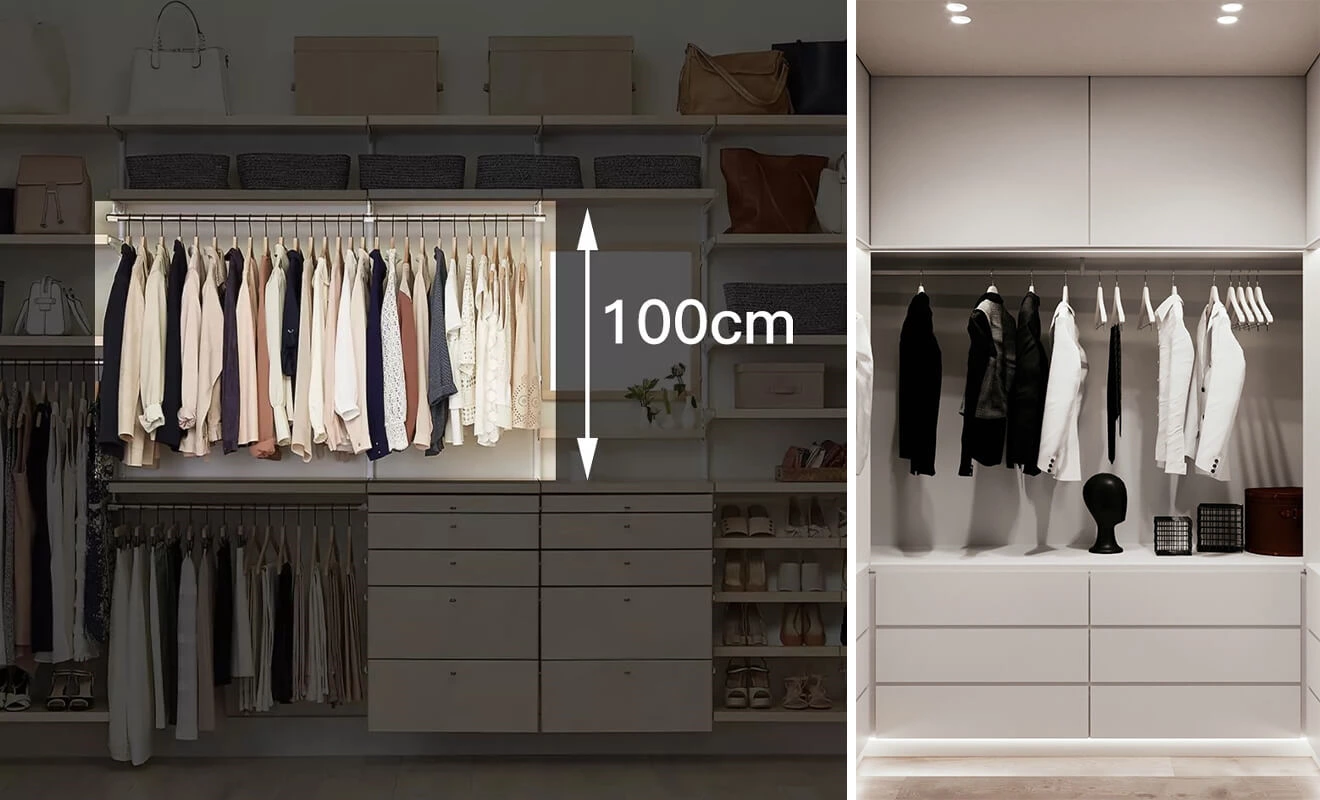
Short Clothes Area: The hanging area can also be divided into a section for short clothes. This area is for storing shirts, T-shirts, and short-sleeved garments. It's advisable to set the height no less than 90cm, generally between 100cm and 120cm, to have enough space for storage.

Trousers Rack Area: Some trousers made of certain materials tend to wrinkle if not hung up. If they are stacked and folded, they need to be ironed each time they are worn, which can be troublesome. Therefore, it's important to allocate a specific area with trouser racks. The height should not be lower than 70cm, ideally between 80cm and 100cm.
Folding Area: Not all clothes can be hung; for example, some knitted sweaters can easily deform if hung up. The folding area doesn't require too many partitions, as excessive partitions would lead to wasted space. The height can be kept between 40cm and 60cm, while the width can range from 30cm to 40cm. This way, even thicker garments won't feel crowded.

Drawer Area: Generally, drawers are used to store small items such as socks, underwear, and scarves. The drawers can be placed separately at the bottom of the wardrobe, with a height ranging from 15cm to 20cm. Effective categorization of items in the drawers makes it easier to find what you need.
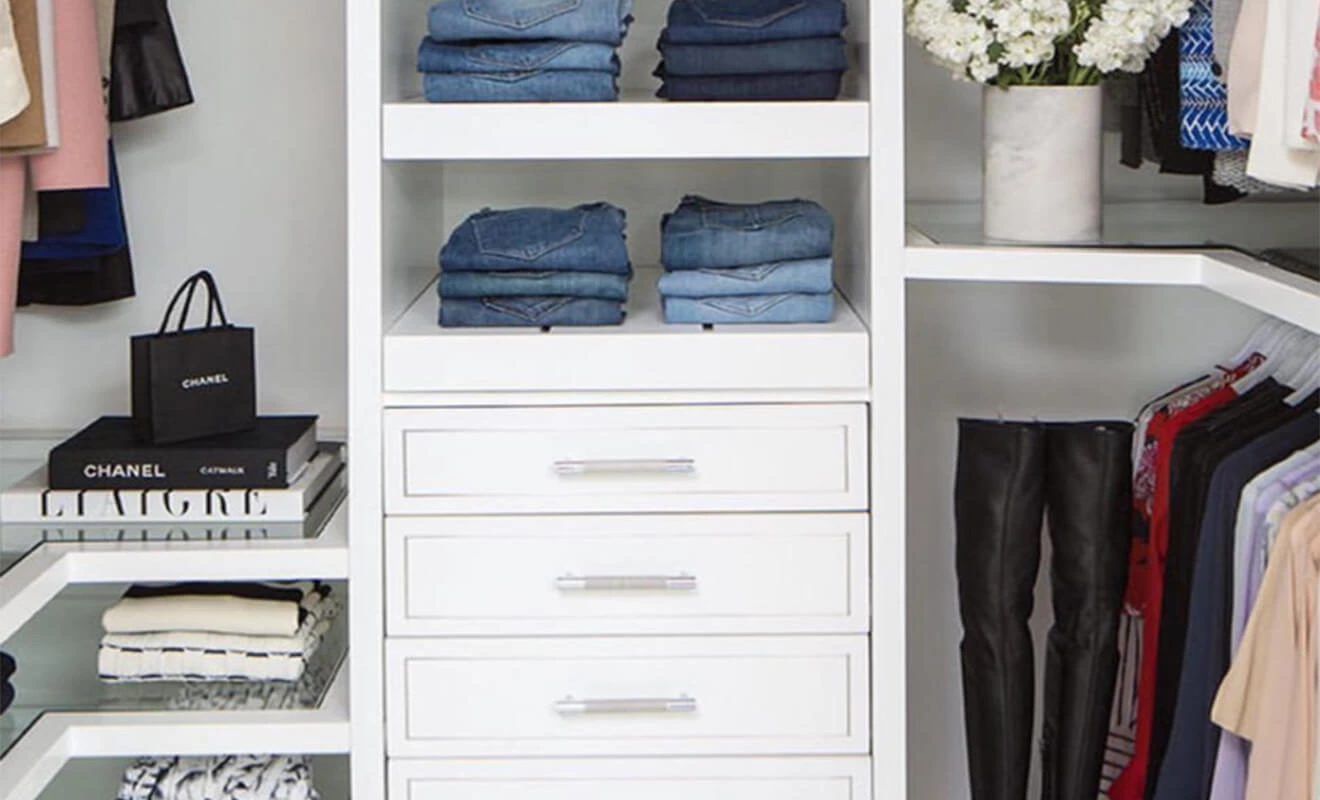
Bedding/Seasonal Clothing Area: The bedding area or the area for storing seasonal clothing can be placed at the top of the wardrobe. Ensure a height of around 40cm for this section, as its usage frequency is relatively low. It doesn't require any additional design, but sufficient space must be allocated.

Appropriate Empty Space: Of course, it's necessary to leave some appropriate empty space in the wardrobe as well. This design allows for easy adjustment in the future. If everything is stacked together, it will hinder the organization of clothes, resulting in a messy look and difficulty in finding items.
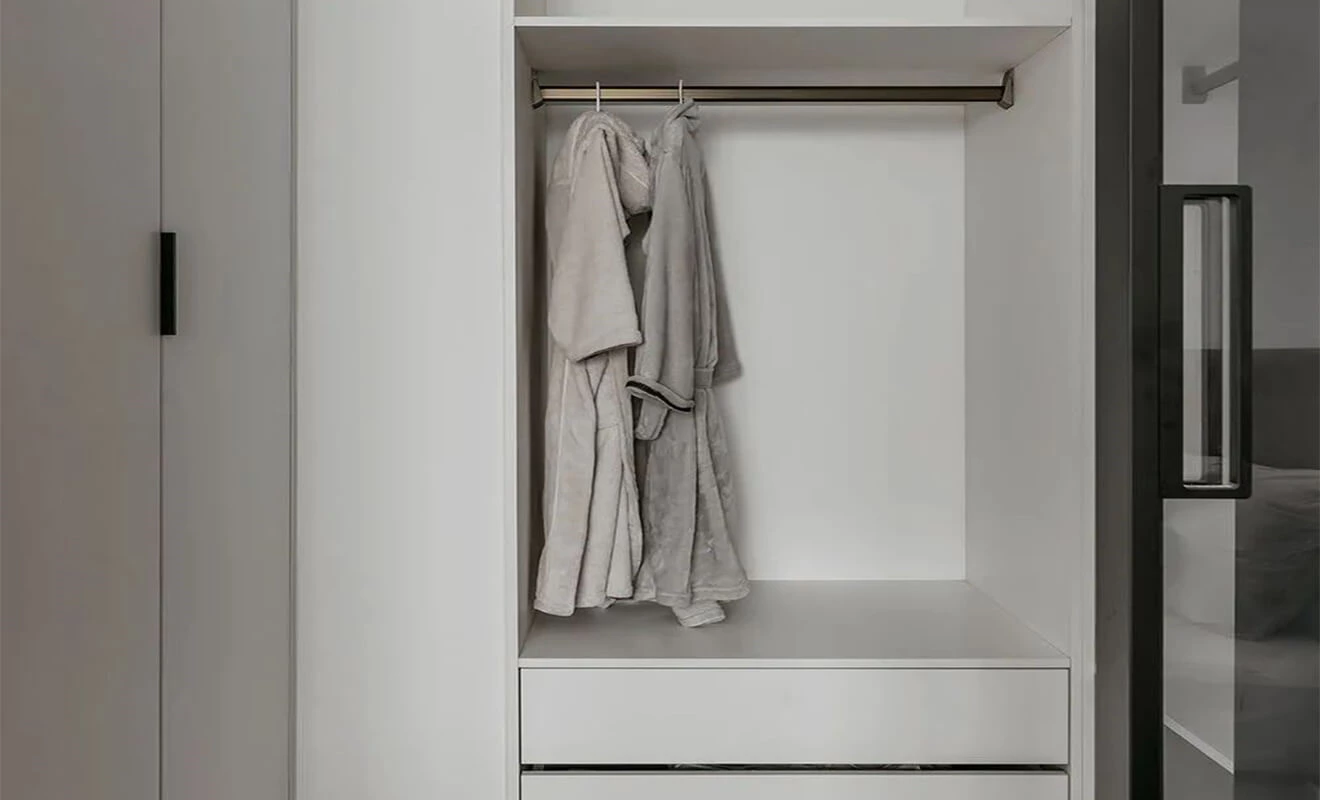
Other Considerations for Wardrobe Design
In addition to optimizing the wardrobe's interior layout, attention should also be given to its exterior design, including materials, style, and opening/closing mechanisms.
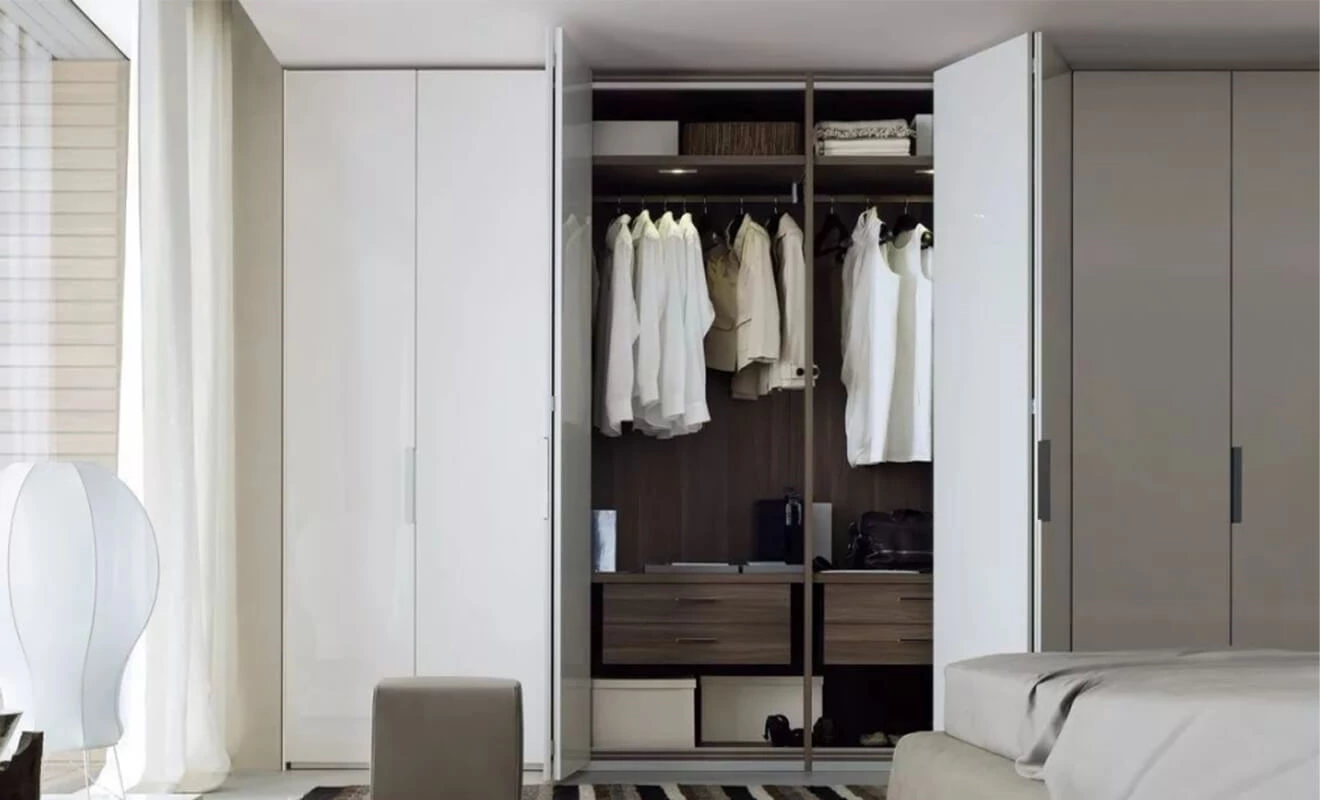
Wardrobe Material:It's advisable to choose wardrobe made of solid wood particle board. Compared to solid wood, this material has a smooth and complete surface without any woodworm holes. It also has higher hardness and density, making it less prone to deformation. It provides better holding power for nails and offers more stability. Some particle boards are more environmentally friendly, and some even allow for quick installation, making them an excellent choice.

Wardrobe Door:There are generally three types of wardrobe doors: sliding door, hinged door and folding door. It's recommended to decide based on the size of the room.

Hinged Doors: Hinged doors require more space in the room, and there should be enough space between the bed and the wardrobe to accommodate a fully opened door. They are more suitable for larger bedrooms.
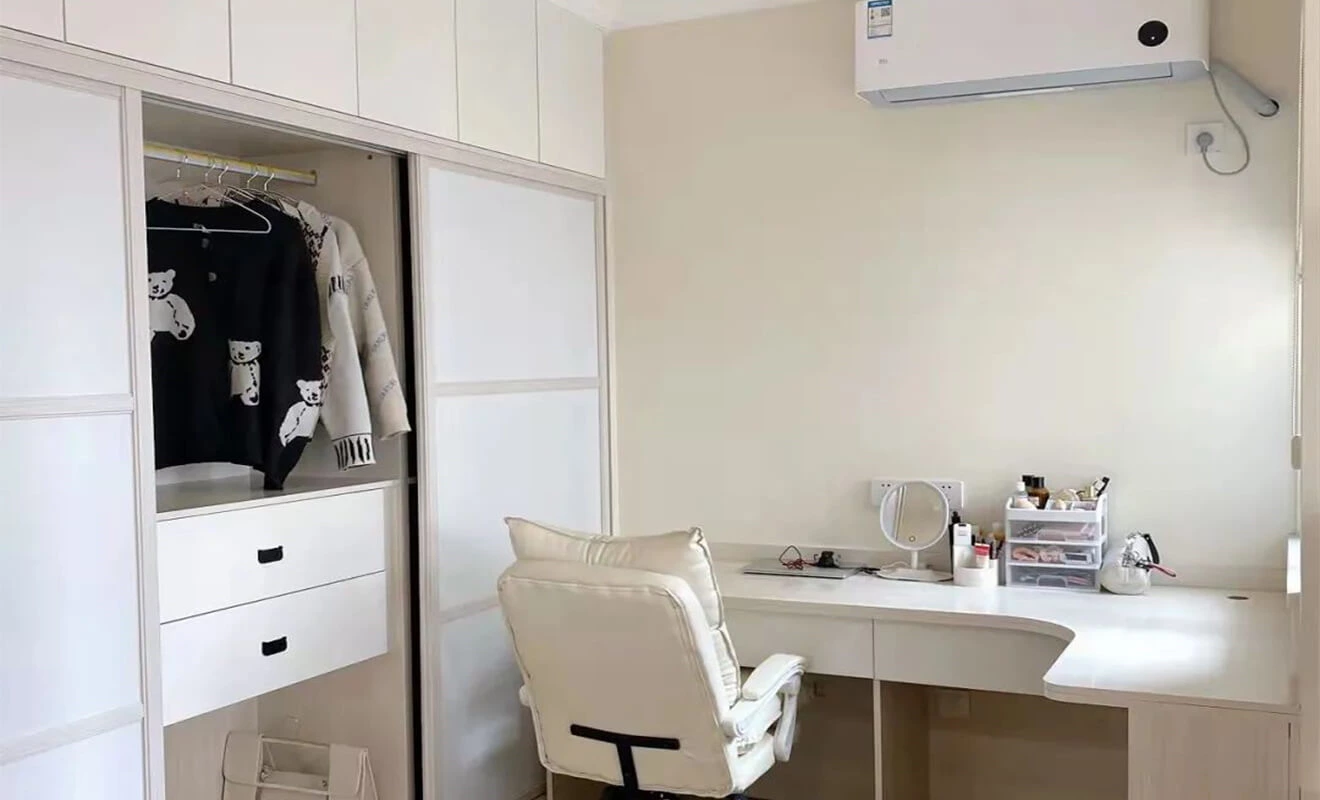
Sliding Doors: Sliding doors do not take up additional space and are more suitable for small spaces. However, the track gaps need to be cleaned regularly; otherwise, dust accumulation over time can become troublesome.

Folding Doors: This design is a combination of sliding and hinged doors. It fully opens like a hinged door but requires the use of sliding tracks. It offers a larger opening space while occupying less room, providing an aesthetically pleasing appearance. It is more suitable for individuals with higher quality requirements.
Floor- to -ceiling Wardrobe:It's essential to have a floor-to-ceiling wardrobe, as it allows for more storage space, convenient organization and avoids dust accumulation. Visually, it also enhances the overall appearance of the room, creating a unified effect.


